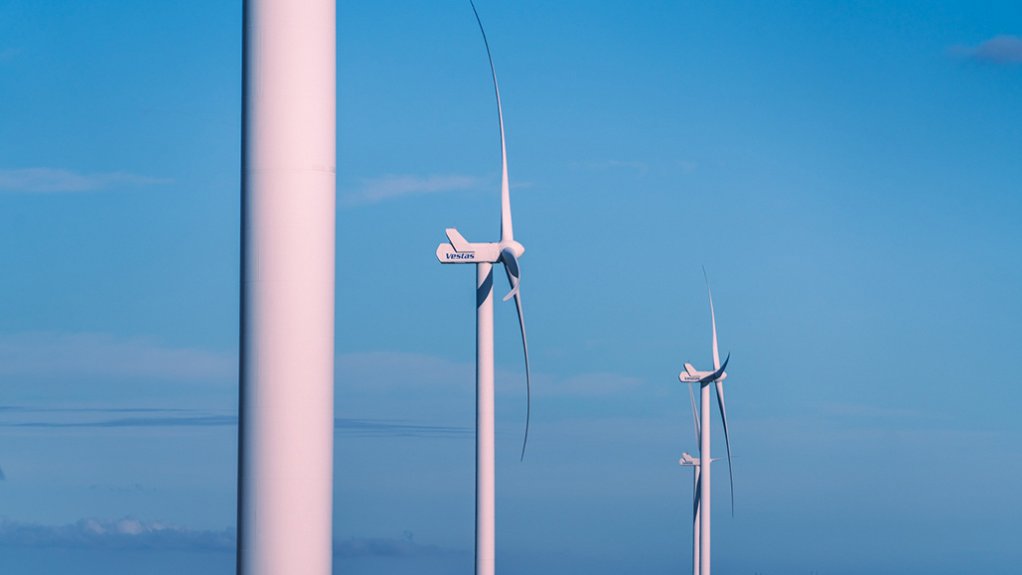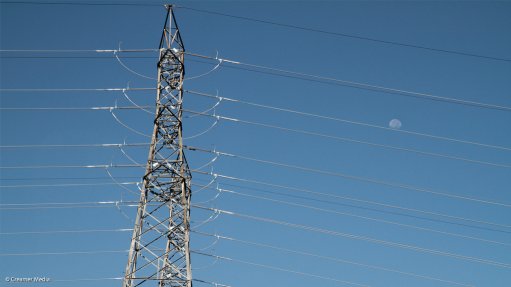International Finance Corporation to develop offshore wind power road map for South Africa
The International Finance Corporation (IFC), part of the World Bank group, is to develop an offshore wind power road map for South Africa, IFC principal renewable energy specialist Sean Whittaker announced at the Windaba conference, at the Cape Town International Convention Centre, late on Thursday afternoon. (The IFC is the World Bank’s private sector financing institution.)
“We’re very pleased to announce that we are initiating a road map for South Africa,” he said. “This work will be taking place over the next nine to 12 months.”
The IFC only developed such road maps at the request of national governments. These road maps provided visions of what could happen, under different growth scenarios, if a country decided to adopt offshore wind power generation. The institution has so far developed such road maps for the Philippines, Vietnam, Sri Lanka, Azerbaijan and Colombia.
The South African road map project will be led by the Carbon Trust and the Council for Scientific and Industrial Research (CSIR). It will have a particular focus on geospatial mapping, the Just Energy Transition, and power-to-X opportunities.
Whittaker reported that the IFC had set up its offshore wind project in 2019. Its aim was to help developing and emerging countries adopt offshore wind as a power source. Currently, offshore wind generation was concentrated in Western Europe and China. But the world cannot be decarbonised if offshore wind was restricted to these regions; it had to be implemented in developing countries as well.
Speaking at the same session, advisory firm ERM director Breanne Clare Gellatly pointed out that total global installed offshore wind capacity, at the end of the second quarter of this year, came to 156.2 GW. Of this, 36.8% was in China, 18.3% in the UK, 11.1% in the US and 8.2% in Germany. At the same date, announced total floating offshore wind capacity (most of it still in the development stage) came to 578 MW, of which 37.8% was in China and 19.3% in the UK. “Offshore wind is definitely a way of reaching scale quickly,” she stated.
The World Bank group already had an offshore wind team in South Africa, which had already produced initial technical assessment maps, explained World Bank offshore wind consultant Chris Lloyd, again at the same session. The very preliminary finding was that South Africa had huge offshore wind power potential. As a result, deeper follow-up studies were started, which took many more factors into account, including the natural and shipping environments and commercial factors. These were all desk-top studies.
The result was that two larger areas were identified as likely to be suitable for the siting of fixed offshore wind towers, while six smaller areas were suggested as suitable for floating offshore wind power systems, reported CSIR senior researcher Jan-Hendrik Grobler. Challenges had also been identified. These were the current complete lack of marine spatial planning in South Africa, the isolation of the local market (making large-scale electricity exports unfeasible), the immaturity of the local offshore wind supply chain, the lack of stakeholder engagement, and, offshore wind was costly.
But there were also opportunities, he pointed out. It would provide large-scale power generation near to major demand centres (coastal cities). Scale was an enabler for cost reduction and green hydrogen production: the bigger the project, the lower the cost, and green hydrogen could be exported. Offshore wind was part of the solution to the energy crisis. And it generated widespread employment: in countries which had adopted offshore wind, the industry had created jobs in inland as well as coastal regions.
Another key point was that offshore wind was a more reliable generator of electricity than onshore wind. With onshore wind, the amount of electricity it generated on average was 30% of its total installed capacity. With offshore wind, the figure was 50%. Grobler noted that these initial World Bank studies suggested that South Africa could create a total offshore wind capacity of 45 GW, which would generate about 22 GW to 23 GW of electricity nearly every day.
There was indeed a cost hurdle for a first offshore wind project, Whittaker noted. Detailed research had to be conducted into South Africa’s offshore winds, currents and under-the-seabed conditions, Lloyd pointed out. This research would cost millions of dollars. Environmental impact assessments would cost tens of millions of dollars. Constructing an offshore wind farm would cost about $300 000 per MW; but while this was higher than for an onshore wind project, offshore wind generated more electricity so the cost of the energy produced was comparable.
Whittaker reported that the more offshore wind projects a country developed, the more the cost involved came down. In the UK, which had adopted offshore wind on a large scale, the cost of offshore wind was now cheaper than that of onshore wind. In fact, in the UK, offshore wind was now one of the cheapest forms of new energy. But, with offshore wind, it was definitely a case of “you go big or you go home”, he said.
South Africa did have unique challenges regarding the adoption of offshore wind. But that was true for every country. For example, in the Philippines, the big challenge was typhoons.
Article Enquiry
Email Article
Save Article
Feedback
To advertise email advertising@creamermedia.co.za or click here
Comments
Press Office
Announcements
What's On
Subscribe to improve your user experience...
Option 1 (equivalent of R125 a month):
Receive a weekly copy of Creamer Media's Engineering News & Mining Weekly magazine
(print copy for those in South Africa and e-magazine for those outside of South Africa)
Receive daily email newsletters
Access to full search results
Access archive of magazine back copies
Access to Projects in Progress
Access to ONE Research Report of your choice in PDF format
Option 2 (equivalent of R375 a month):
All benefits from Option 1
PLUS
Access to Creamer Media's Research Channel Africa for ALL Research Reports, in PDF format, on various industrial and mining sectors
including Electricity; Water; Energy Transition; Hydrogen; Roads, Rail and Ports; Coal; Gold; Platinum; Battery Metals; etc.
Already a subscriber?
Forgotten your password?
Receive weekly copy of Creamer Media's Engineering News & Mining Weekly magazine (print copy for those in South Africa and e-magazine for those outside of South Africa)
➕
Recieve daily email newsletters
➕
Access to full search results
➕
Access archive of magazine back copies
➕
Access to Projects in Progress
➕
Access to ONE Research Report of your choice in PDF format
RESEARCH CHANNEL AFRICA
R4500 (equivalent of R375 a month)
SUBSCRIBEAll benefits from Option 1
➕
Access to Creamer Media's Research Channel Africa for ALL Research Reports on various industrial and mining sectors, in PDF format, including on:
Electricity
➕
Water
➕
Energy Transition
➕
Hydrogen
➕
Roads, Rail and Ports
➕
Coal
➕
Gold
➕
Platinum
➕
Battery Metals
➕
etc.
Receive all benefits from Option 1 or Option 2 delivered to numerous people at your company
➕
Multiple User names and Passwords for simultaneous log-ins
➕
Intranet integration access to all in your organisation




















